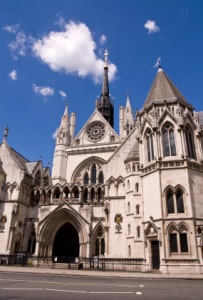The Land Registry can sue a former law firm for negligent misrepresentation in not checking whether a mortgage discharge form was genuine, the High Court has decided.
Ruling on case involving forged documents, Master Matthews said there was no fiduciary relationship between the Land Registry and Birmingham law firm Caffrey & Co, closed by the Solicitors Regulation Authority (SRA) in 2012.
Master Matthews said the solicitors involved were professional conveyancers, but “they were not detectives”, and were making statements not to a layman, but to Land Registry staff, who “might be expected to have systems for checking matters themselves”.
However, the Master said he was “narrowly persuaded”, on the “peculiar facts of this case”, that it was right to “treat the defendant as having assumed a duty to take care in the representations which it made to the claimant”.
The court heard in Chief Land Registrar v Caffrey & Co [2016] EWHC 161 (Ch), that Mr and Mrs Turner, registered as joint owners of a farm, charged it to the DB UK Bank as security for a loan.
Master Matthews said the couple supplied the law firm with a DS1 mortgage discharge form “purportedly signed on behalf of the bank”, but in fact “it was not so signed”.
The Master said: “The Turners told the defendant that the bank was represented by another firm of solicitors, but this was not true either.
“The defendant did not contact the bank or the solicitors allegedly instructed by them to verify the DS1 or the instruction of solicitors. Instead it submitted the form DS1 to the Land Registry together with a form AP1 to apply to alter the register and delete the charge.
“The Land Registry raised a requisition requesting evidence that the person signing the DS1 had authority to do so on behalf of the bank.”
In response the Turners produced a “purported power of attorney”, apparently appointing four people to act as attorneys for the bank, which the Master said was a “fabrication”.
The law firm sent a certified copy to the Land Registry, which removed the mortgage from the title to the property. Following the bankruptcy of Mrs Turner in 2010, the bank discovered its charge had been removed and applied to reinstate it.
The court heard that Mr Turner had previously registered a charge over the property in favour of Santander, which objected to the reinstatement. An adjudicator decided in 2012 that the DB UK charge could be reinstated, but only as a second charge, and the bank obtained an indemnity from the Land Registry.
The master rejected the Land Registry’s first cause of action against Caffrey & Co, a claim that the law firm owed a duty of care to the bank, which it had breached. The Land Registry argued that it was “subrogated by statute” to the claim of the bank under the Land Registration Act 2002.
Master Matthews rejected this argument. He said the law firm “having been told that the bank had its own solicitors, had no reason to think that the bank was relying on it in any way, no reason to disclaim any duty towards the bank and no reason to advise it to take its own advice”.
He went on: “Here the defendant was indeed responsible for doing the particular act (submitting the documents to the Land Registry without making the checks suggested). But that is what it was asked to do. Indeed, its clients could have complained had it not done just that.
“In my view it is not fair just or reasonable to make the solicitor in this case responsible to the bank for the risk of fraud within an inherently risky system.”
However, the master agreed to the Land Registry’s second application for judgment in default, based on negligent misrepresentation. The defendant law firm did not appear in court and was not represented.
A spokesman for the SRA said that Caffrey & Co, incorporating Khattak-Pasha & Co, was closed following an intervention in 2012.















Does this mean Caffey & Co was “closed” with no run-off cover?